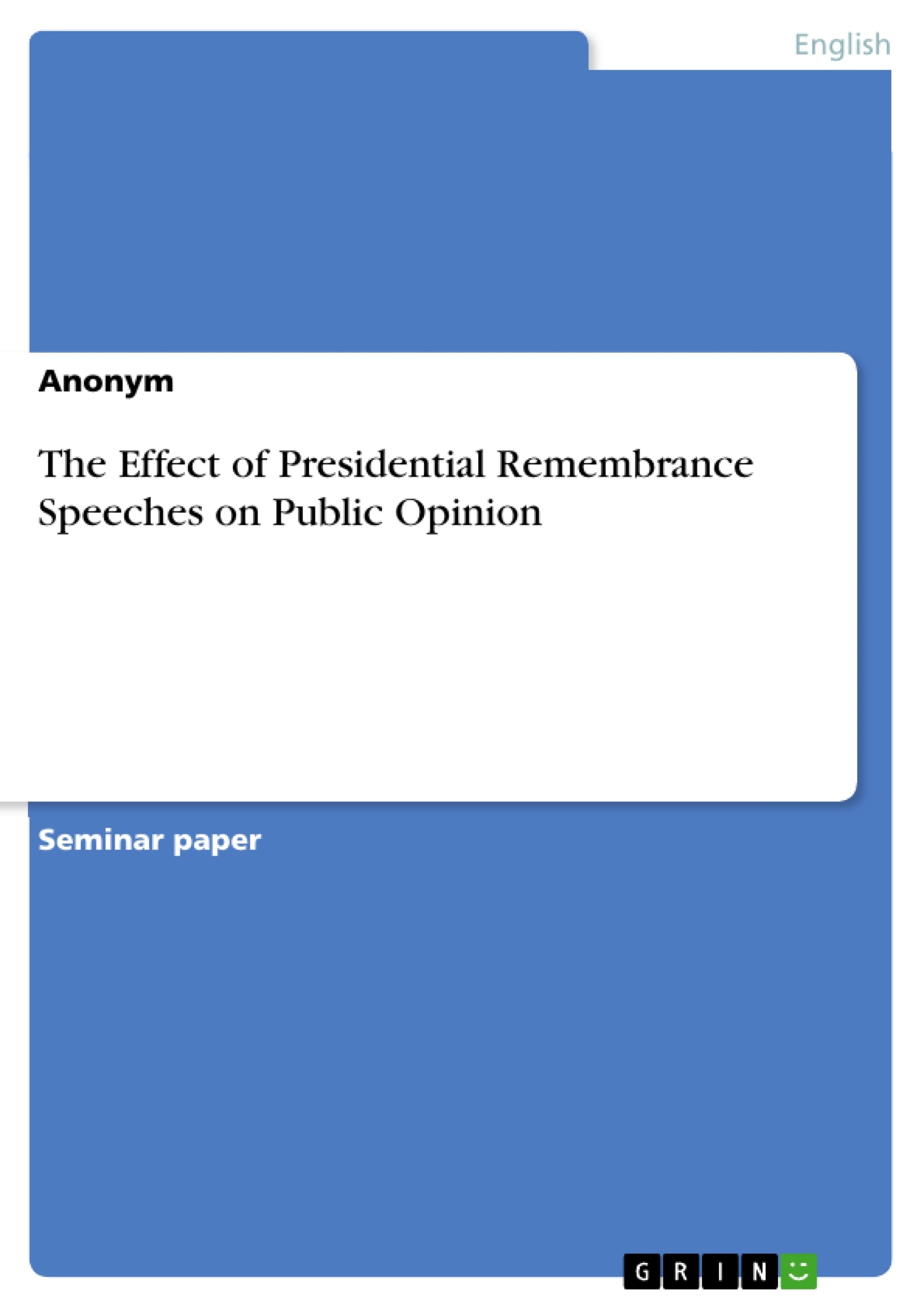The paper investigates the impact of presidential 9/11 memorial speeches on U.S. public opinion regarding security and counterterrorism. It utilizes Entman's framing theory to analyze how these speeches define problems, identify causes, convey moral judgments, and suggest remedies. The study highlights shifts in presidential rhetoric from 2001 to 2014, examining changes in problem definitions and proposed solutions. It also explores the relationship between these frames and public perceptions, drawing on polling data to assess the influence of presidential speeches on citizens' sense of security and support for antiterrorism measures.
Inhaltsverzeichnis (Table of Contents)
- Introduction
- Analytical Framework
- Methodology
- Analytical Results and Discussion
- Analytical Results
- Discussion
- Hypothesis One
- Hypothesis Two
- Hypothesis Three
- Conclusion
Zielsetzung und Themenschwerpunkte (Objectives and Key Themes)
This paper aims to examine the impact of presidential 9/11 remembrance speeches on U.S. public opinion regarding public security and counterterrorism measures. It investigates how the framing of these speeches influences public perceptions of threats, government initiatives, and overall feelings of safety.
- Framing effects on public opinion
- Impact of presidential rhetoric on counterterrorism perceptions
- Relationship between presidential framing and public security concerns
- Analysis of presidential speeches using Entman's framing model
- Effects of priming on public opinion
Zusammenfassung der Kapitel (Chapter Summaries)
- Introduction: The paper introduces the topic of 9/11 remembrance speeches and their potential influence on public opinion. It highlights the significance of George W. Bush's address to the nation on September 11, 2001, and its impact on public perceptions of terrorism.
- Analytical Framework: This section delves into the theoretical framework of framing, specifically focusing on Entman's concept of substantive frames. It outlines the four key functions of a frame: defining a problem, identifying causes, conveying moral judgment, and endorsing remedies. The section also discusses Entman's cascading network activation model and the role of priming in influencing audience perceptions.
- Methodology: This section will describe the research methods used in the paper, including the specific analyses conducted on the presidential 9/11 remembrance speeches.
- Analytical Results and Discussion: This section will present the findings of the analyses, including the identification of frames employed in the speeches and their potential correlations with public opinion on public security and counterterrorism measures. It will also discuss the key themes and arguments emerging from the data.
Schlüsselwörter (Keywords)
The key terms and concepts explored in this paper include presidential rhetoric, framing effects, public opinion, counterterrorism, public security, 9/11 remembrance speeches, Entman's framing model, priming, and cascading network activation model.
- Quote paper
- Anonym (Author), 2015, The Effect of Presidential Remembrance Speeches on Public Opinion, Munich, GRIN Verlag, https://www.grin.com/document/1477946



